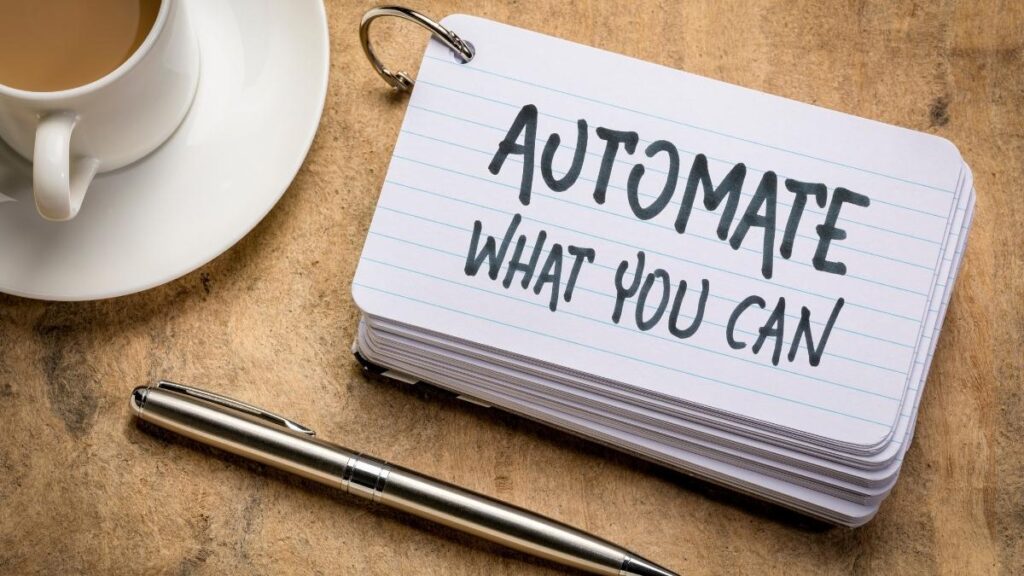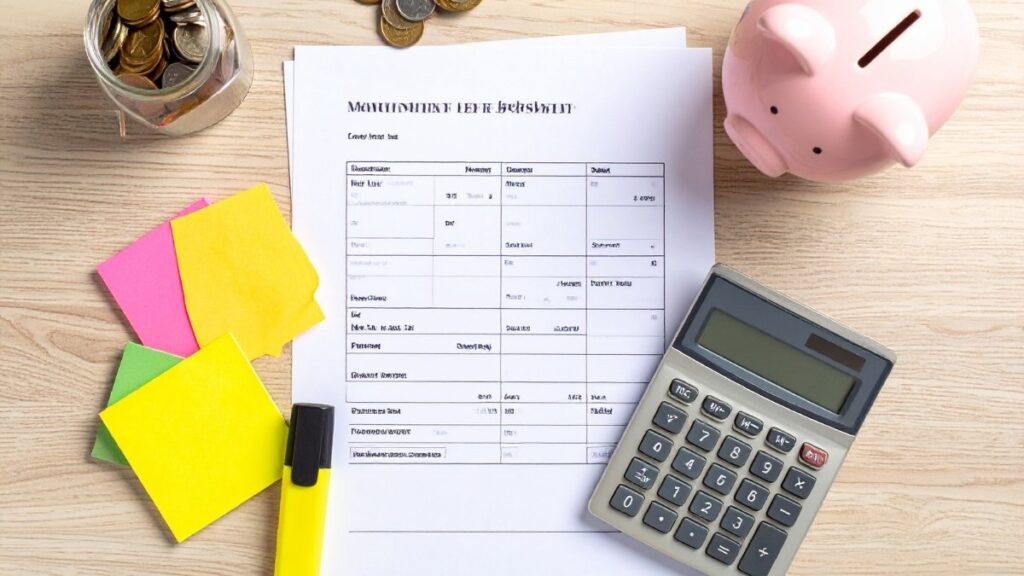I canceled Netflix, meal-prepped for months, and moved to a cheaper apartment. My expenses dropped 70%, but my savings account? Still practically empty. You’re not alone. Nearly half of Americans saved less in 2024 despite expense-cutting efforts.
The shocking truth: 59% of Americans can’t cover an unexpected $1,000 emergency expense. This is the “expense reduction paradox” – why cutting spending doesn’t equal savings.
You can’t save money despite cutting expenses because of hidden budgeting psychology mistakes. This article reveals the psychological gap between not spending and actually saving, five reasons expense cuts don’t stick, and science-backed strategies that build wealth.
The Real Cost of Lifestyle Inflation
You Cut Expenses by $150… But Where Did Your Savings Go?
Why You Can’t Save Money (Even Though You Cut Your Spending)
You know the feeling. You skip your daily coffee. You cancel subscriptions. You buy generic brands instead of name brands. Yet your savings account stays flat.
Sound familiar? You’re not alone. You’re also not doing anything wrong.
The problem isn’t your spending cuts. It’s what happens to that “saved” money afterward.
The Psychology Gap: Not Spending vs. Actually Saving
Here’s the truth most budgeting advice misses: Not spending money is not the same as saving money.

When you cut your $5 daily coffee habit, you don’t automatically save $150 per month. That money just sits in your checking account, waiting to be spent on something else. Maybe it’s a nicer dinner. Maybe it’s clothes you “deserve” for being so good with money. Either way, it’s gone.
Your brain plays tricks on you here. It sees the money you didn’t spend as “found money” – like winning a small lottery. This mental accounting error makes you feel richer than you actually are.
Key Point: Cutting expenses only creates savings potential. Without a system to capture that money, it disappears into other spending.
Most people build budgets based on their ideal self, not their real spending patterns. You think you’ll stick to $200 for groceries because that sounds reasonable. But your real spending pattern might be $300. When you inevitably spend $275, you feel like you failed – even though you actually cut $25.
This creates what psychologists call willpower fatigue. Every spending decision becomes a mental battle. Should I buy this? Is this in my budget? Am I being good with money? Your brain gets tired from all these choices.
Key Point: Budgets based on unrealistic expectations create a cycle of guilt and giving up, rather than actual progress.
The stats back this up. More than 86% of people have a budget, but 74% say increasing costs are their biggest challenge. They’re not failing at budgeting – they’re using a system that doesn’t account for human psychology.
Meanwhile, your brain overestimates how much you’re saving. You remember the $5 coffee you skipped but forget the $12 lunch upgrade you bought later. This confirmation bias makes you think you’re doing better than you are.
Key Point: Without tracking actual transfers to savings, not just spending cuts, you’ll consistently overestimate your progress.
The real problem? You’re trying to save through deprivation instead of automation. And deprivation doesn’t work long-term.
Hidden Reason #1: Lifestyle Inflation Is Eating Your “Savings”
Lifestyle inflation is the silent killer of savings plans. It works like this: You cut $100 from your budget. Then you slowly spend that $100 on small upgrades without noticing.

It starts innocent enough. You buy the good coffee beans since you’re not getting Starbucks. You upgrade to premium gas because you deserve it. You get the name-brand cereal because the generic stuff tastes weird.
Each upgrade feels small. But they add up fast.
Key Point: Small lifestyle upgrades often cost more than the original expense you cut, destroying any potential savings.
In 2025, subscription creep hits especially hard. Streaming services, fitness apps, cloud storage, meal kits – they all auto-renew monthly. Americans underestimate their subscription costs by $32 per month on average. That’s $384 per year of missing money.
But the real damage happens with income increases. Let’s say you’re a software engineer making $120,000. You get a $20,000 raise. Instead of saving most of it, you spend $16,000 on lifestyle upgrades – better apartment, nicer car, more expensive hobbies.
That $16,000 in yearly lifestyle inflation costs you $1.2 million in retirement savings over 30 years (assuming 7% investment returns).
Key Point: Every $200 monthly lifestyle increase costs you approximately $168,800 in long-term wealth building.
Social media makes this worse. You see friends’ vacation photos, new cars, fancy restaurants. Your brain thinks you need to keep up. This social comparison pressure is stronger than ever in 2025.
The psychological trigger is powerful: “I’m being good with money by cutting expenses. I deserve this small treat.” But those small treats aren’t small when you add them up.
Key Point: “Reward spending” for cutting expenses cancels out the benefit of those cuts.
Here’s what happens in your checking account: You cut $150 in coffee expenses. Over the next month, you spend $40 extra on groceries, $35 on a nicer lunch, $30 on premium gas, $25 on a streaming service you forgot you had, and $20 on impulse purchases. You’ve actually increased your spending by $0, despite “cutting” $150.
The worst part? You feel like you’re being financially responsible because you remember cutting the coffee. Your brain doesn’t automatically track the small increases.
Key Point: Without conscious systems to capture cut expenses, lifestyle inflation will absorb 100% of your “savings.”
Hidden Reason #2: You’re Fighting Inflation (Not Just Your Spending)
Even if you cut your spending perfectly, inflation is stealing your progress.

Let’s say you successfully cut $100 per month from your budget last year. But food prices went up 6.1% year-over-year. If your grocery bill was $500 per month, inflation added $30.50 to your monthly costs. Your “saved” $100 becomes $69.50 in real purchasing power.
Key Point: Inflation can wipe out 30-50% of your expense reductions without you realizing it.
The average American household now spends $6,053 annually on groceries – and that number keeps climbing. When you cut other expenses but your essential costs rise, you’re running on a treadmill.
This hits especially hard because inflation doesn’t feel like spending. Your grocery receipt just gets bigger each month. You buy the same items but pay more. It’s invisible theft of your financial progress.
Key Point: Rising essential costs (housing, food, utilities) can completely offset reductions in optional spending.
The psychology here is brutal. You’re working hard to spend less, but your purchasing power keeps shrinking. 61% of Americans are extremely or very concerned about inflation making things more expensive. 47% cite cost of living as their biggest obstacle to saving.
Then there’s “shrinkflation” – products getting smaller while prices stay the same. Your cereal box has 10% less cereal but costs the same. You think you’re buying the same thing for the same price, but you’re actually paying more per ounce.
Key Point: Shrinkflation makes it impossible to accurately track whether your expense cuts are working.
The personal saving rate was 4.5% as of June 2025, up from 4.3% the previous year. But that tiny increase doesn’t keep pace with inflation. People are trying to save more, but their money buys less.
Here’s the math that will shock you: If inflation is 3% and you’re earning 1% on your savings account, you’re losing 2% of purchasing power every year. Even perfect expense cutting can’t fix that without investment growth.
Key Point: Saving money in low-yield accounts during high inflation periods actually makes you poorer over time.
Hidden Reason #3: Emergency Fund Leaks and Unexpected Expenses
Your emergency fund is sabotaging your long-term savings. Not because having one is bad, but because of how you use it.

37% of Americans used emergency savings in the last 12 months. 80% used it for essentials like car repairs or medical bills. But 27% admit they used emergency funds for non-essentials.
Key Point: Emergency funds become slush funds when you don’t define “emergency” clearly.
Here’s what happens: You build up $2,000 in emergency savings. Your car needs $800 in repairs. You use the emergency fund. Now you need to rebuild it to $2,000 again. But while you’re rebuilding, you can’t put money into long-term savings.
The median emergency savings is only $600. Among people who have emergency funds, the average balance is $18,500. That’s a huge gap – most people either have almost nothing or they’ve turned their emergency fund into their primary savings account.
Key Point: Constantly rebuilding small emergency funds prevents you from ever moving to wealth-building investments.
The psychology gets worse. Every time you use emergency savings, you feel like you’re “starting over” with your financial goals. This creates a cycle where you never feel like you’re making progress.
37% of Americans can’t afford a $400 emergency without borrowing money or selling something. When these people finally cut expenses and build up $400, they feel successful. But then the car breaks down. They’re back to zero, plus they might have used a credit card to cover the gap.
Key Point: Without adequate emergency funds, any financial progress gets wiped out by normal life events.
Here’s the hidden problem: People treat emergency fund refills as their only savings goal. They cut $150 per month in expenses. $100 goes to rebuilding the emergency fund they used last month. $50 goes to random spending. Zero goes to long-term wealth building.
This creates what I call “emergency fund quicksand.” You’re always rebuilding, never building wealth.
Key Point: If you’re constantly rebuilding emergency savings, you’re not actually saving – you’re just covering gaps in cash flow.
The solution isn’t to skip emergency funds. It’s to separate emergency money from wealth-building money. But most people don’t know how to do both at once.
Hidden Reason #4: The “Good Enough” Savings Mentality
You’re probably not saving enough, but you think you are.

Only 22% of Americans are completely satisfied with their savings amount. But here’s the weird part: 38% are confident in their ability to save for retirement. The math doesn’t add up.
Key Point: Most people are overconfident about their long-term financial security while being dissatisfied with their current savings rate.
This happens because people think in percentages instead of real dollars. You might think “I save 10% of my income” sounds good. But 10% of $50,000 is $5,000 per year. At that rate, it takes 10 years to save one year of expenses. That’s not enough for retirement.
Meanwhile, you’re spending 75% of any income increases. You get a $5,000 raise and immediately increase your lifestyle by $3,750. Your savings rate stays the same percentage-wise, but you’re not building wealth any faster.
Key Point: Fixed percentage savings rates can keep you broke even as your income grows.
Only 36% of U.S. households had a long-term financial plan in 2024. The rest are winging it. They cut expenses here and there, put some money in savings, and hope it works out.
But hope isn’t a strategy. Without a plan, you’ll always feel like you’re doing enough when you’re probably not.
Key Point: Without specific dollar targets and timelines, “good enough” savings will leave you short of your goals.
Research shows people are terrible at predicting future expenses. You think you’ll spend less when you retire. You assume you won’t have major medical bills. You forget about inflation.
This prediction bias makes your current savings feel adequate when they’re not. You’re optimizing for your imaginary future self, not your real future needs.
Key Point: Underestimating future expenses makes current savings efforts feel more successful than they actually are.
The “I’ll save when I earn more” trap is especially dangerous. You think your current income isn’t enough for serious savings. But when your income grows, your expenses grow too. You end up in the same position, just with bigger numbers.
Key Point: Waiting for higher income to start saving seriously usually means never saving seriously.
Hidden Reason #5: Your Environment Is Working Against You
Your surroundings are sabotaging your savings goals every single day.

Start with credit cards. They make spending feel fake. When you swipe a card, your brain doesn’t register it as “real” money leaving your account. Credit card ownership is highest (43%) among people who aren’t living paycheck to paycheck – exactly the people who should be saving more.
Key Point: Credit cards create psychological distance between spending decisions and their financial impact.
Then there’s social comparison. You see coworkers buying lunch out every day. You see neighbors getting new cars. Your brain thinks this is normal spending behavior. You start to feel deprived when you pack lunch or drive an older car.
Technology makes it worse. One-click purchasing removes the friction that used to protect your money. You can buy something in 2 seconds without thinking. Amazon’s “Buy Now” button has probably cost you thousands in impulse purchases.
Key Point: Reduced friction in spending decisions leads to more frequent, less conscious purchases.
Decision fatigue hits every day. Should you buy the expensive bread or cheap bread? Premium gas or regular? Name brand or generic? Your brain gets tired from making these choices. When you’re mentally exhausted, you default to easier (usually more expensive) options.
Behavioral economics research shows that willpower depletes throughout the day. Morning you might stick to your budget perfectly. But evening you, tired from a long day of decisions, orders takeout instead of cooking.
Key Point: Relying on willpower for spending decisions will fail when your mental energy is low.
Your physical environment matters too. If your kitchen is poorly stocked, you’ll order food. If your gym bag isn’t ready, you won’t work out and might spend money on other activities instead. If your savings account is hard to access, you won’t put money in it.
Key Point: Environmental design determines your default behaviors more than your intentions do.
Here’s the hidden problem: Most budgeting advice tells you to “just spend less” without changing your environment. That’s like trying to diet while keeping cookies on your counter. Your environment will beat your willpower every time.
Even your budgeting tools might work against you. Apps that track spending can make you feel bad about purchases after you make them, but they don’t prevent the purchases. They’re rearview mirrors, not steering wheels.
Key Point: Tracking spending without changing spending environments provides information but not results.
The Real Solution: 5 Science-Backed Strategies That Actually Work
Forget willpower. Forget perfect budgets. Here are the systems that actually build wealth.
Strategy 1: Automate Before You Cut
Set up automatic transfers to savings before you reduce any expenses. This is the “pay yourself first” rule in action.

Here’s how: If you want to cut $200 per month in expenses, first set up a $200 automatic transfer from checking to savings. Schedule it for the day after payday. Then work on cutting expenses.
Key Point: Automating savings first ensures the money gets saved before you can spend it on something else.
This works because it removes the decision from your daily routine. You don’t have to remember to save or find “leftover” money at the end of the month. The system does it for you.
Start with even $25 per month if that’s all you can handle. The habit matters more than the amount at first. You can increase it later.
Key Point: Building the automation habit with small amounts is more valuable than sporadic large savings transfers.
Use percentage-based increases tied to income growth. Every time you get a raise, increase your automatic savings by 50% of that raise amount. If you get a $200 monthly raise, increase savings by $100 monthly.
Tools that help: Most banks offer automatic transfers. Set up separate savings accounts for different goals. Use apps like Acorns or Betterment for automatic investing.
Strategy 2: Use Optimistic Budgeting
Research shows that unrealistic budgets actually lead to better outcomes than realistic ones. This sounds backwards, but it works.

Set spending limits that are 20% lower than your actual spending patterns. If you normally spend $400 on groceries, budget $320. You probably won’t hit $320, but you’ll likely spend less than $400.
Key Point: Stretch goals create better results than easily achievable goals, even when you don’t fully reach them.
This works because of a psychological principle called “anchoring.” Your brain uses your budget numbers as reference points. Lower budget numbers pull your actual spending down, even if you go over budget.
The key is tracking your actual spending without guilt. Going over an optimistic budget isn’t failure – it’s progress toward a better target.
Key Point: Optimistic budgets work as psychological anchors to reduce spending, not as rigid rules to follow perfectly.
Apply this to savings goals too. If you think you can save $100 per month, set a goal of $130. You might only save $110, but that’s better than the $100 you would have saved with a “realistic” goal.
Don’t use this strategy for essential bills like rent or utilities. Only use optimistic budgeting for variable expenses like food, entertainment, and shopping.
Strategy 3: Create Environmental Friction
Make spending harder and saving easier through environmental design.
Remove payment information from shopping websites. Uninstall shopping apps from your phone. Put a 24-hour delay on any purchase over $50. These tiny barriers prevent impulse purchases.

Key Point: Adding small barriers to spending decisions reduces total spending without requiring ongoing willpower.
Make saving easier by setting up automatic transfers, using apps that round up purchases into savings, and keeping savings accounts at different banks so the money feels “gone.”
Use cash for discretionary spending categories. When the cash is gone, you’re done spending in that category for the month. Credit cards remove psychological friction; cash adds it back.
Key Point: Physical cash creates psychological friction that digital payments remove, leading to more conscious spending decisions.
Change your default options. Set your bank account to transfer $1 from checking to savings every time you use your debit card. Make savings the default, not the exception.
Current apps that create positive friction: YNAB forces you to assign every dollar a job. PocketGuard stops you when you’ve reached spending limits. Simplifi makes you categorize expenses before tracking them.
Strategy 4: Track True Net Worth, Not Just Spending
Focus on wealth-building metrics instead of lifestyle metrics.
Calculate your net worth (assets minus debts) monthly. Track how much it grows, not just how much you spend or save. This number tells the real story of your financial progress.

Key Point: Net worth growth is the only metric that matters for long-term financial success.
Many people save money in low-yield accounts while carrying high-interest debt. They feel good about having $5,000 in savings but ignore $8,000 in credit card debt. Their net worth is negative $3,000.
Track investment account values, not just savings account balances. Money in savings accounts loses value to inflation. Money in investment accounts can grow wealth.
Key Point: Assets that grow in value build wealth; assets that don’t grow in value just store money.
Use apps like Empower (formerly Personal Capital) to automatically track all your accounts in one place. Seeing your total financial picture prevents the mental accounting errors that sabotage progress.
Set net worth goals instead of expense goals. “Increase net worth by $6,000 this year” is better than “spend $500 less per month.” The first goal allows flexibility in how you achieve it.
Strategy 5: The 24-Hour Rule for Unexpected Money
Create cooling-off periods for windfalls and “saved” money.
When you get a tax refund, bonus, or successfully cut an expense, wait 24 hours before deciding what to do with that money. This prevents the “found money” spending spree.

Key Point: Immediate access to “saved” or “bonus” money leads to impulsive spending decisions that destroy financial progress.
Set up automatic rules: 50% of any unexpected money goes to long-term savings, 25% goes to emergency funds, 25% can be spent on anything. This removes the decision-making burden while ensuring most of the money builds wealth.
Break the mental link between cutting expenses and gaining spending money. When you cut your cable bill by $60 per month, that’s not $60 to spend elsewhere – it’s $60 to save.
Key Point: Treating expense reductions as automatic savings transfers prevents lifestyle inflation from absorbing the benefits.
Apply this to regular income increases too. When you get a raise, automatically save 50% of the increase and only allow lifestyle inflation on the other 50%.
Use tools like Betterment’s “tax refund” feature that automatically invests refund money, or set up separate “windfall” savings accounts that are harder to access for everyday spending.
Conclusion
Cutting expenses doesn’t automatically create savings. Without systems to capture that money, it disappears into lifestyle inflation, emergency fund refills, and random spending.
The solution isn’t more willpower or better budgets. It’s better systems.
Psychology and environment matter more than good intentions. Your brain will sabotage your savings goals unless you design your financial life to work with human nature, not against it.
Key Point: Systems beat willpower every time for long-term financial success.
Automation and intentional friction are your best tools. Automate the money you want to save. Add friction to the money you want to spend. Remove decisions from your daily routine.
The people who successfully build wealth don’t have more willpower than you. They have better systems than you.
Key Point: Successful savers use environmental design and automation, not superior self-control.
Start with Strategy 1 this week: Set up one automatic transfer to savings before cutting another expense. Your future self will thank you.
Remember: You can’t save money despite cutting expenses because cutting expenses doesn’t equal saving money. But now you know how to change that.

